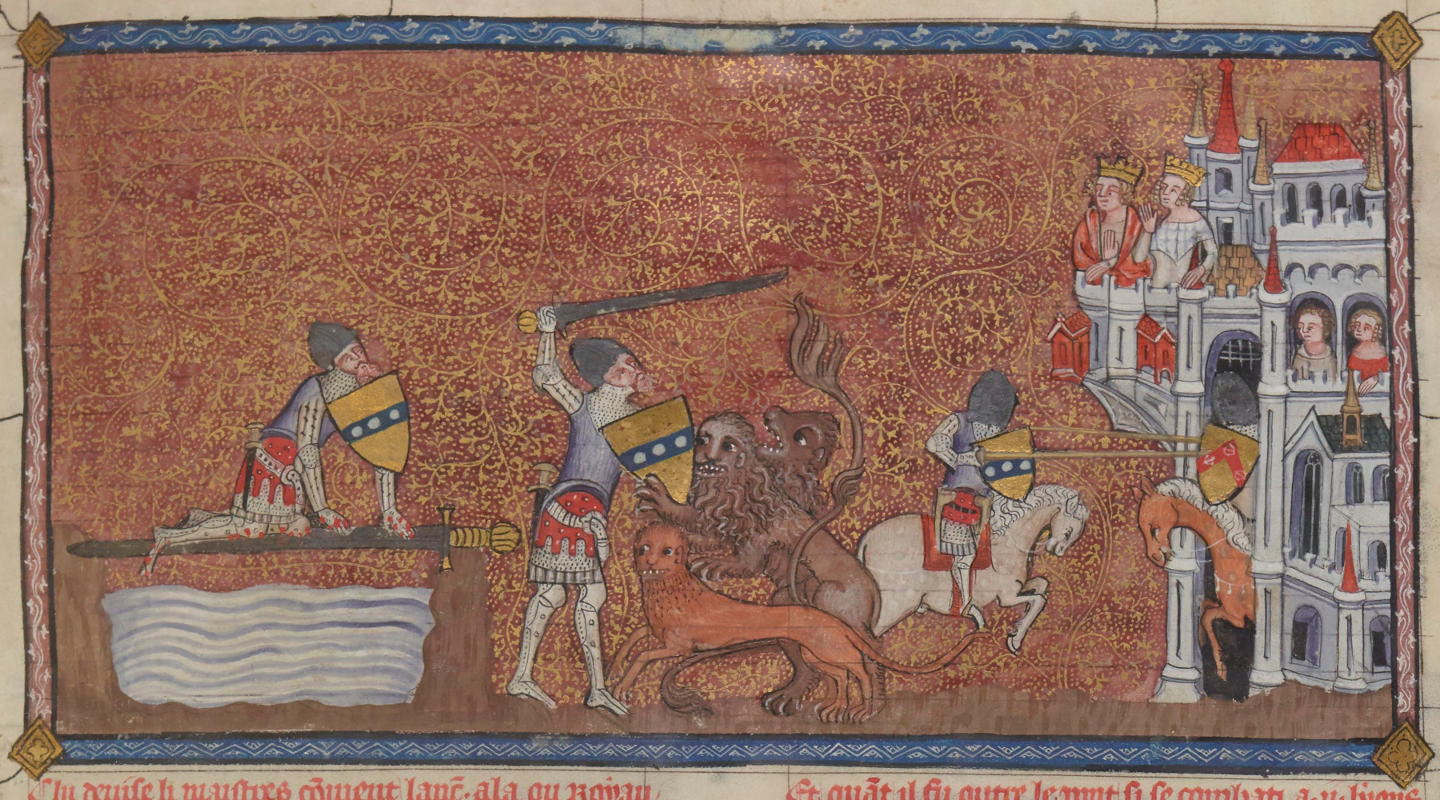Amazon Prime Student 6-month Trial

Shop Amazon - Create an Amazon Baby Registry
'Lancelot du Lac' by Gautier Map, Hainaut, Belgium, 1344AD.
Bibliothèque nationale de France Français 122, f.1r.

A larger image of 'Lancelot du Lac' by Gautier Map, Hainaut, Belgium, 1344AD. Bibliothèque nationale de France Français 122, f.1r.
Title : « Le Roman de Lancelot du Lac, de « GAUTIER MAP », deuxième partie, la Quête du Saint Graal, la Mort d'Arthus.
Publication date : 1344
Subject : Lancelot, Roman de
Type : manuscript
Language : french
Format : Vélin, miniatures, lettres ornées
Description : Numérisation effectuée à partir d'un document original.
Description : Le ms. commence à la recherche de la reine Guenièvre par Lancelot.
(The manuscript begins with the search for Queen Guinevere by Lancelot.)
Rights : public domain
Identifier : ark:/12148/btv1b10533299h
Source : Bibliothèque nationale de France. Département des manuscrits. Français 122
Source: Gallica, Bibliothèque nationale de France
Titre : lancelot du lac
Nom de pays : belgique
Origine : hainaut
Siècle : 14ème siècle
Date : 1344
Français 122, fol. 1, Lancelot passant le pont de l'Épée
Français 122, fol. 1, Lancelot combattant les lions magiques de Gaihom
Français 122, fol. 1, Combat de Lancelot et de Meleagant
Source: Mandragore, Bibliothèque nationale de France
Le Roman de Lancelot du Lac is used as the source for figure 32. FRENCH MAN-AT-ARMS 1344 in Armies of the Middle Ages, Volume 1 by Ian Heath
... he wears a cyclas over a gambeson, hauberk and coat-of-plates, and a bascinet with camail under his helm.
His leg-armour differs, however, in being rivetted directly on to his mail chausses rather than being strapped on, while his arm-harness is actually of leather.
Such leather brassards were clearly quite common at this date, being mentioned in King John IV's ordinance of 1351, and remained popular until the end of the 14th century and even somewhat later.
His gauntlets appear to be lined with small plates.
Note also the circular hand-guard on his lance, which had begun to appear in quantity as early as the 1320s but until c. 1450 remained more common on jousting lances than on lances of war. It was later called a vamplate.
Other 14th Century Illustrations of Costume and Soldiers


